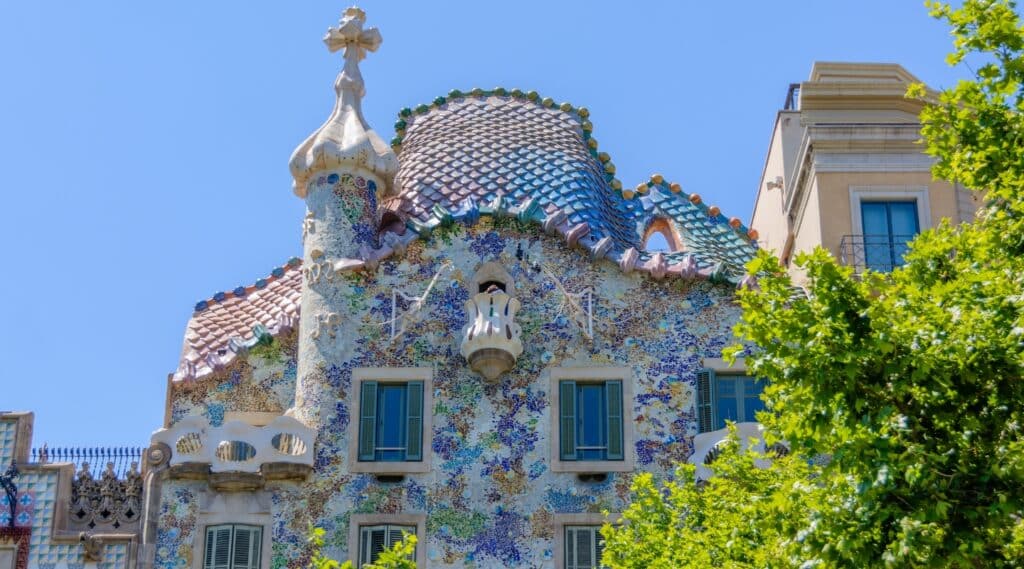Gaudi Barcelona is a mesmerizing tapestry of architectural marvels, seamlessly interwoven with the city's heartbeat.
Walking its streets, you can't help but feel the artistic pulse of this Catalonian capital, where every nook and corner seem touched by his genius.
This blog post dives deep into the wonders Gaudí gifted Barcelona, taking you on a journey through iconic edifices that stand as testament to a visionary's dream.
Who was Gaudí?
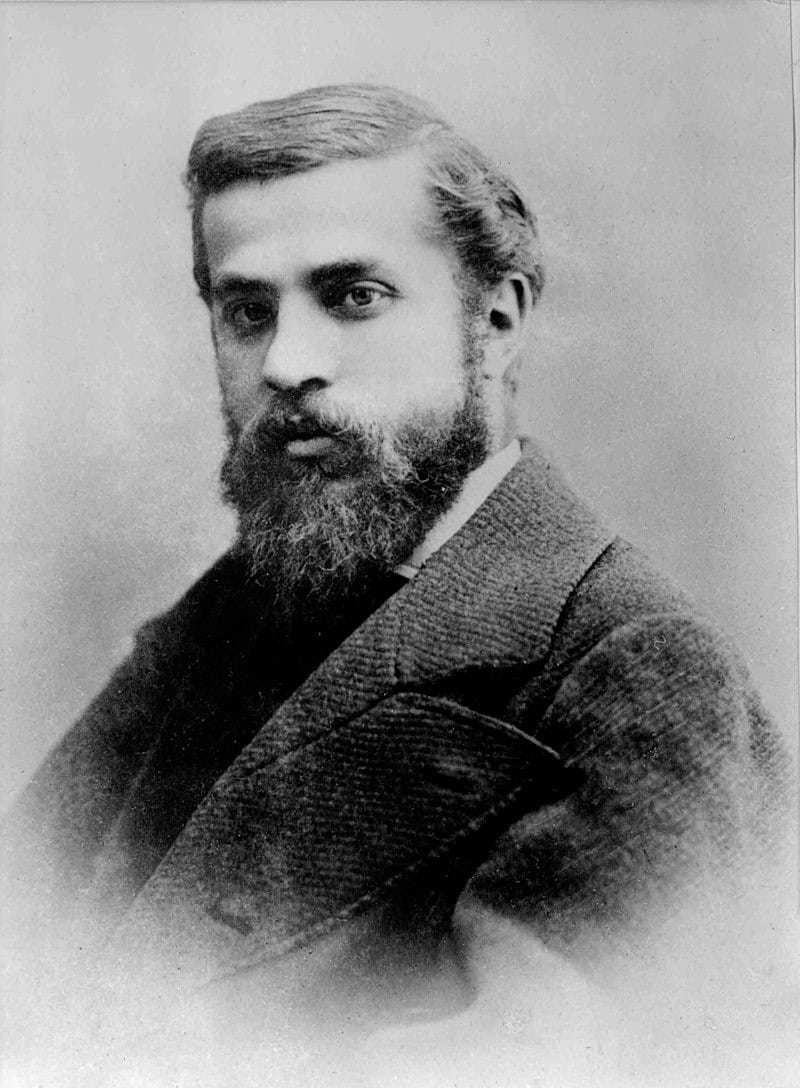
Image source: wikipedia.org
Spanish architect Antoni Gaudí Cornet was born in 1852 in Reus, Spain. He is considered the father of Catalan modernism thanks to his distinctive method and innovation.
Gaudí's style is characterized by its freedom of form and bold use of color and texture. Many Gaudí buildings have been declared UNESCO world heritage sites. He spent a large portion of his career working on the Expiatory Temple of the Holy Family (Sagrada Família), which remained unfinished at the time of Gaudí's death.
Gaudi Barcelona Style

Early Gaudí works were initially Victorian in style, but he quickly began introducing quirky juxtapositions of geometric masses to his work.
Many of the surfaces were composed of patterned bricks, broken ceramic tiles, and floral metalwork, characteristic of the Moorish or Mudéjar design style. The distinctive style is clearly seen at Casa Vicens , El Capricho, and the Güell Estate and Güell Palace.
Gaudí's innovations with historic styles can be seen in the Episcopal Palace, Casa de los Botines, and the Baroque in Casa Calvet, but after 1902, his work began to truly defy conventional definitions.
He introduced equilibrated styles without internal bracing or external buttressing in the Villa Bell Esguard and the Colonia Güell Church, as well Casa Milà, a multi-story apartment building.
Gaudí began working on La Sagrada Família towards the end of his life, at which time he became exceedingly pious. Gaudí devoted himself completely to the project but never lived to see it.
The Catalan architect was mowed down in a traffic accident in 1926, walking to the Sagrada Família as he did every evening.
Despite Gaudí's influence in the 19th and early 20th centuries and ground-breaking personal style, Gaudí's career went largely unnoticed until the 1960s. Today, buildings linked to Gaudí are treasured heritage sites popular with tourists around the globe.
Best Gaudí Buildings To See in Barcelona
Most of Gaudí's buildings can be seen in the city of Barcelona, Spain. If you are interested in the early Art Nouveau movement, or a fan of Gaudí's exceptional creative contribution to the architectural world, the city won't disappoint.
Casa Vicens
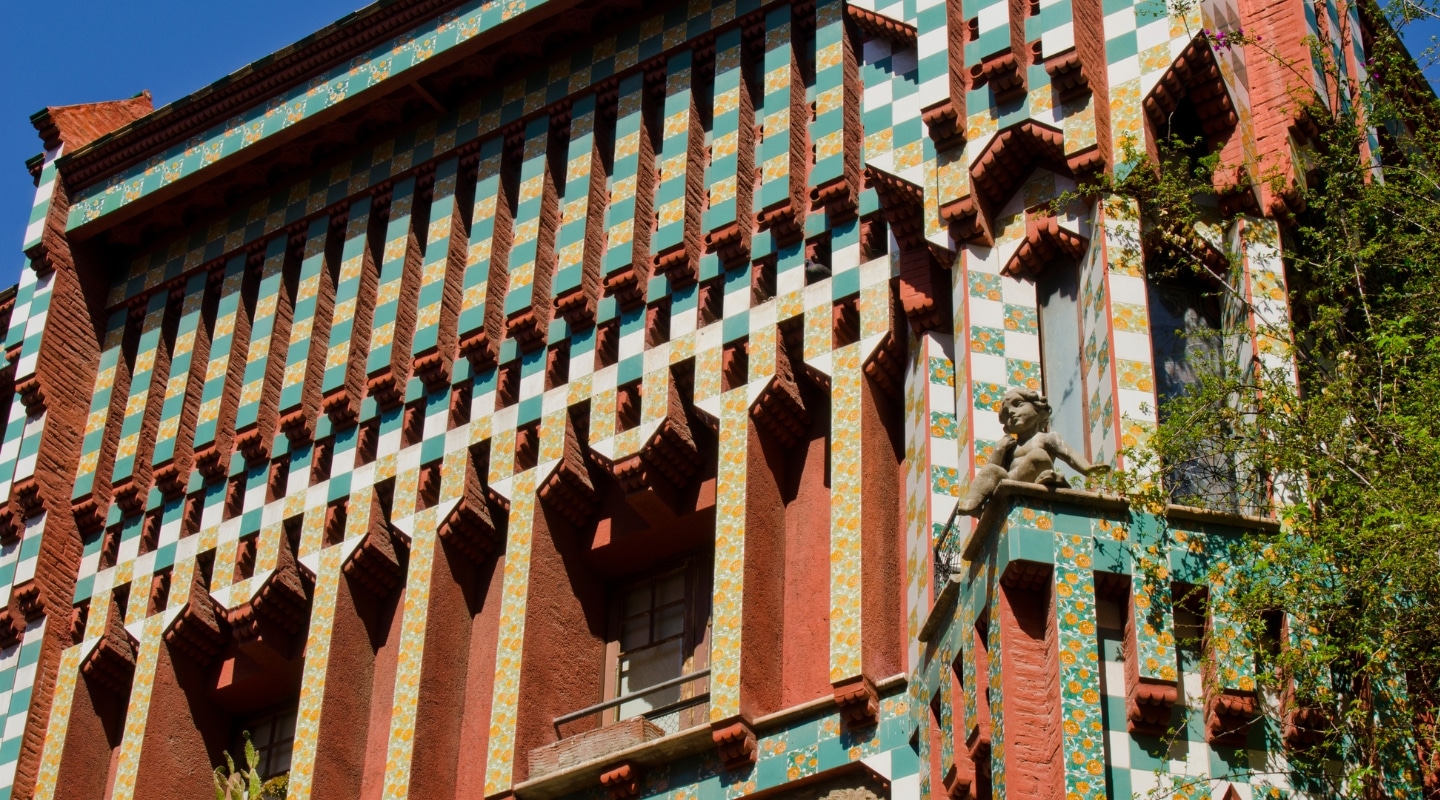
This imaginative residential building is considered one of the first Art Nouveau buildings in the world and the first time young Gaudí really began experimenting with the Neo-Mudéjar style.
Built in 1883-1888, the home was designed for a wealthy family who owned a ceramic factory.
You can clearly see the Islamic, Oriental, and neoclassical design elements in the residence, and the building demonstrates perfectly how Gaudí broke away from tradition to create an impressive new style.
Casa Milà (La Pedrera)

Nicknamed "the stone quarry" due to its unusual appearance, this World Heritage site is one of the most popular modernist buildings in the city. Built between 1906-1912, this is one of the most sculptural and creative buildings in the world.
Characterized by a façade of undulating stone and ornate iron balconies, decorated skylights, chimneys, and staircases, as well as a spectacular roof terrace, Casa Mila is as ar tful as it is functional.
Park Güell
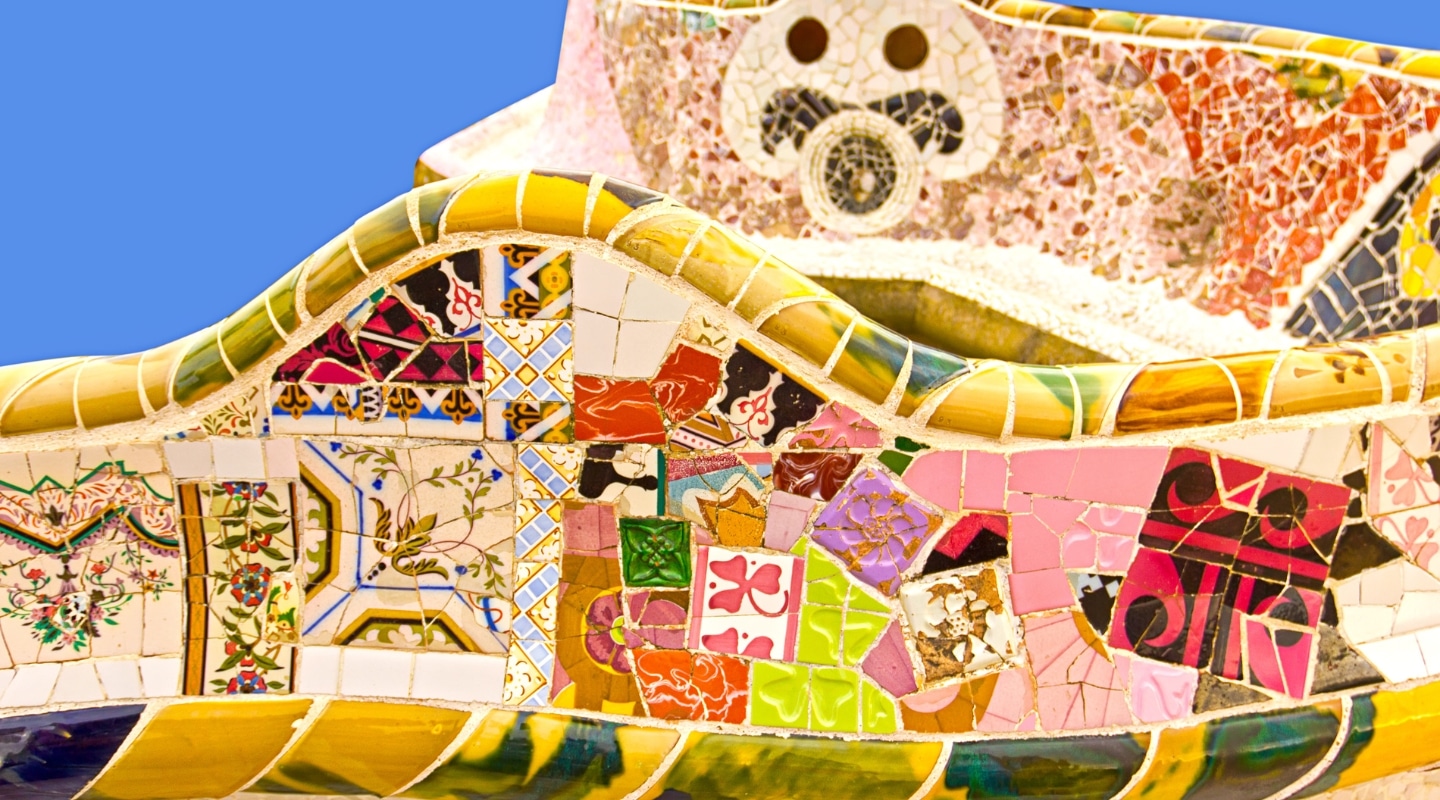
Park Güell was commi ssioned to Antoni Gaudí by Eusebi Güell. It was built between 1900 and 1914 and houses several of Gaudí's works, including his house.
The Gaudí House Museum, located at one of the entrances of the garden complex, features many of the furniture and objects Gaudí designed during his lifetime.
Gaudí spent 20 years perfecting his style at his home, which was greatly inspired by the plantlife of Park Guell. The colonnaded hall with the iconic Gaudí dragon covered in mosaics features a terrace with beautiful views over Barcelona.
Palau Güell
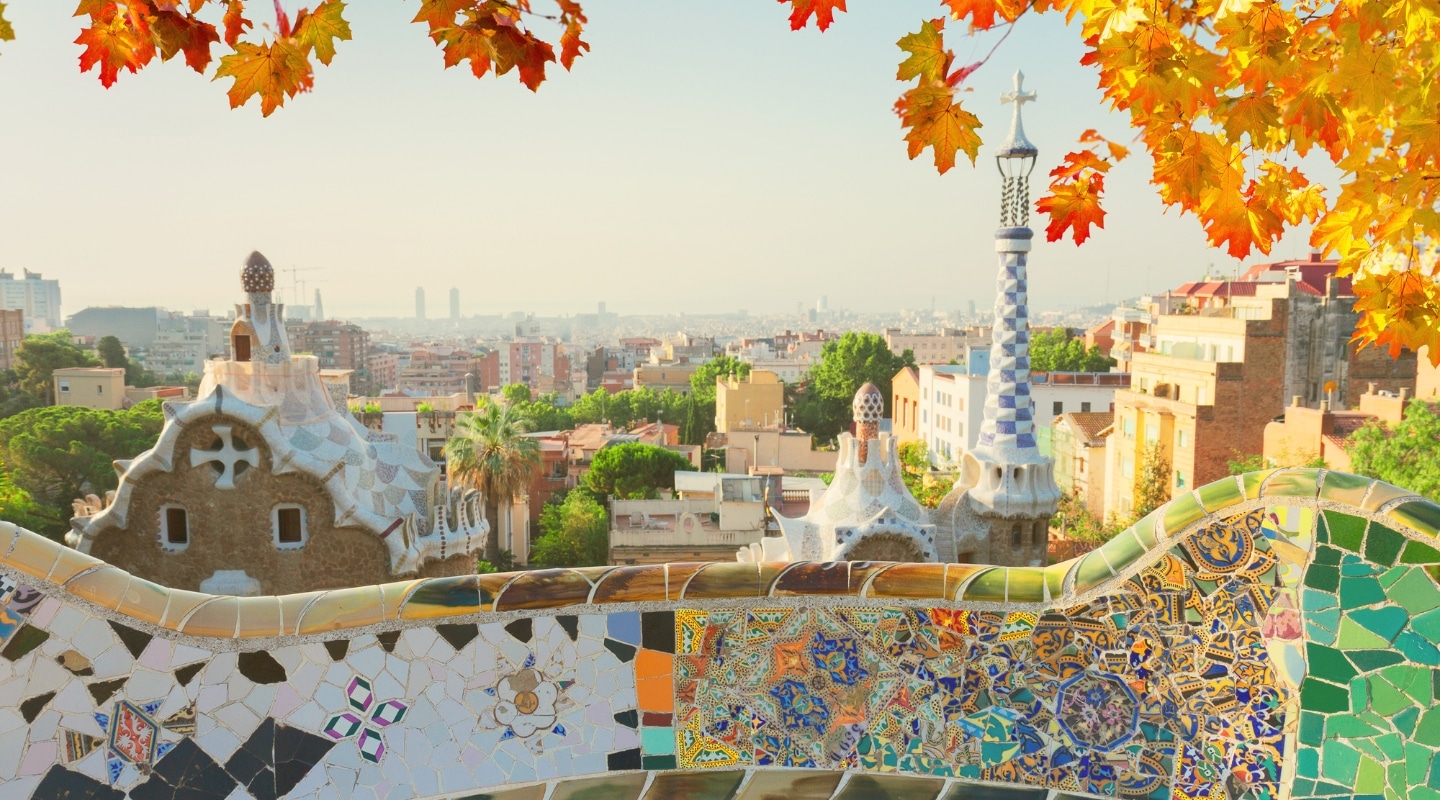
Palau Güell , just off the popular La Rambla area, was the palace residence of the famous Güell family. The buildings show restraint that isn't often seen in Gaudí's architecture, but the unique parabolic arch makes up for the lack of flair.
The ceilings are domed and perforated by circles, resembling a modern planetarium, while the chimneys and vents resemble fir trees.
Colonia Güell
Antoni Gaudi designed this oval church and crypt in 1898, although the project remained incomplete after his business suffered a series of losses. You can see the completed crypt, which was built with stone bricks and mosaics.
There are five aisles with spectacular stained glass windows and a ceramic composition of the four cardinal virtues. Many consider Colonia Güell to be the precursor of the La Sagrada Familia.
El Drac de Gaudí at Finca Güell
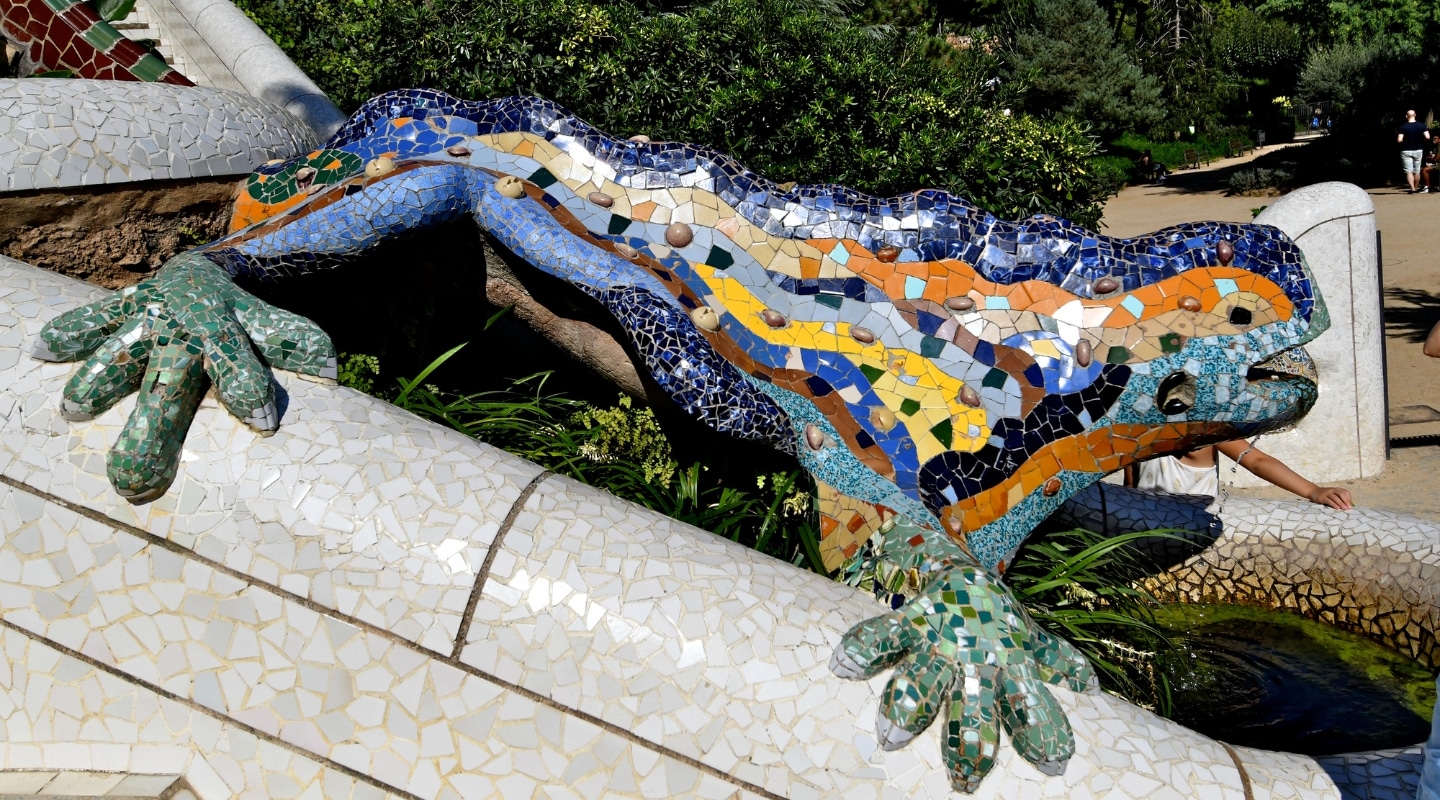
Finca Güell is yet another property of the Güell family. Gaudí did not design the buildings but remodeled the house and built the iron gate and perimeter wall.
The wrought-iron grille in the shape of a menacing dragon was inspired by the creature from the Garden of the Hesperides in Greek myth and was built by a locksmith. It's certainly one of the most unusual of Gaudi's works seen in the city.
Casa Batlló
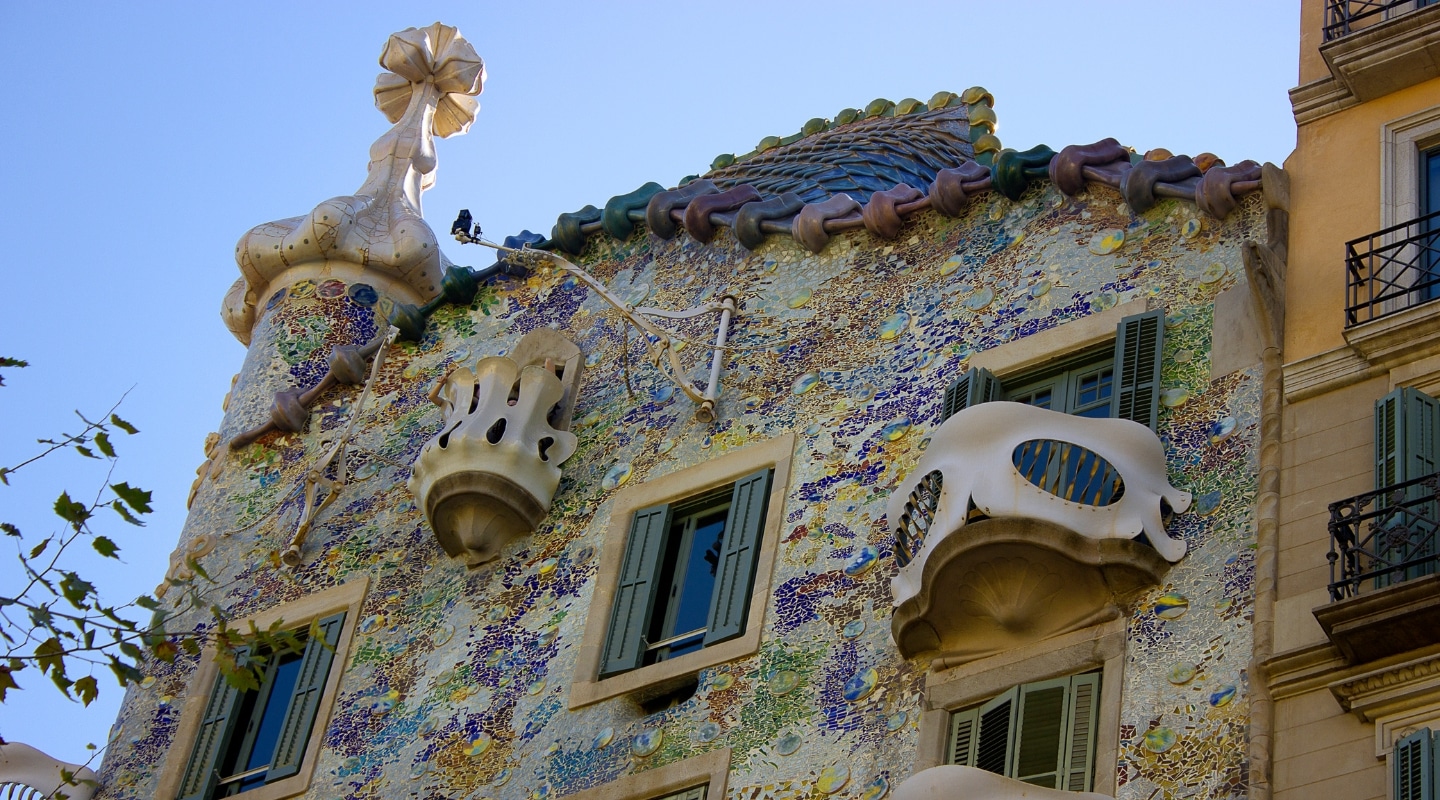
Casa Batlló is a perfect example of Catalan Art Nouveau constructive elements and Gaudí's use of ceramics, iron, and stone.
The building's radical design landed Gaudí in hot water as it broke the bylaws of the city, but in 1906 the Barcelona City Council recognized it as one of the best buildings in the city.
The local nickname for the building is Casa Dels Ossos, House of Bones, due to its skeletal appearance. The arched roof resembles the back of a dragon, with a rounded tower supposedly representing Saint George plunging his lance into the beast.
La Sagrada Familia

The La Sagrada Familia cathedral has been under construction since 1892 and will finish in 2026. Construction was interrupted several times and halted completely during the Spanish Civil War.
Combining curvilinear Art Nouveau forms and unusual geometrics, Sagrada Familia is Gaudí's masterpiece. The Cathedral features ten spires, each symbolizing an important Biblical figure, with the tallest representing Christ.
The church represents the relationship between man, nature, and God through its sculptures and façades. Light impacts the color of the building, creating an impressive cascade of different hues at different times.
You can climb the Nativity tower for a breathtaking view over the whole city.
Torre Bellesguard
This Gothic-inspired medieval restoration features colorful slate and Gaudí's signature Trecandís technique, along with stained glass depicting the star of Venus. Gaudí added a viaduct and restructured the main complex.
How to See Gaudi Barcelona Work
There are several ways to view Gaudí's body of work. The official Barcelona City Pass includes free entry to 7 Gaudi Barcelona attractions, including the Sagrada Familia, and there are over 140 different tours related to Gaudí in the city to choose from.
The most popular guided tours include the Sagrada Família tour (with Skip the Line tickets), a combination tour of Sagrada Família and Park Güell, and a self-guided, immersive 10D tour of Casa Batlló.
It would be very difficult to see all of Gaudí's work (including 14 buildings, numerous fountains, and several refurbishment projects), but whichever sites you choose will be well worth it.
If you are traveling through Spain, be sure to check out some of Gaudí's other famous buildings, including El Capricho in Cantabria, the Episcopal Palace and Casa Botines in León, the Bodegas Güell in Sitges, and the Artigas Gardens.
You might also be interested in these attractions in Barcelona:
- Best Sushi Restaurants in Barcelona - November 21, 2023
- Christmas in Barcelona - November 8, 2023
- Is Barcelona Safe at Night? - September 29, 2023

